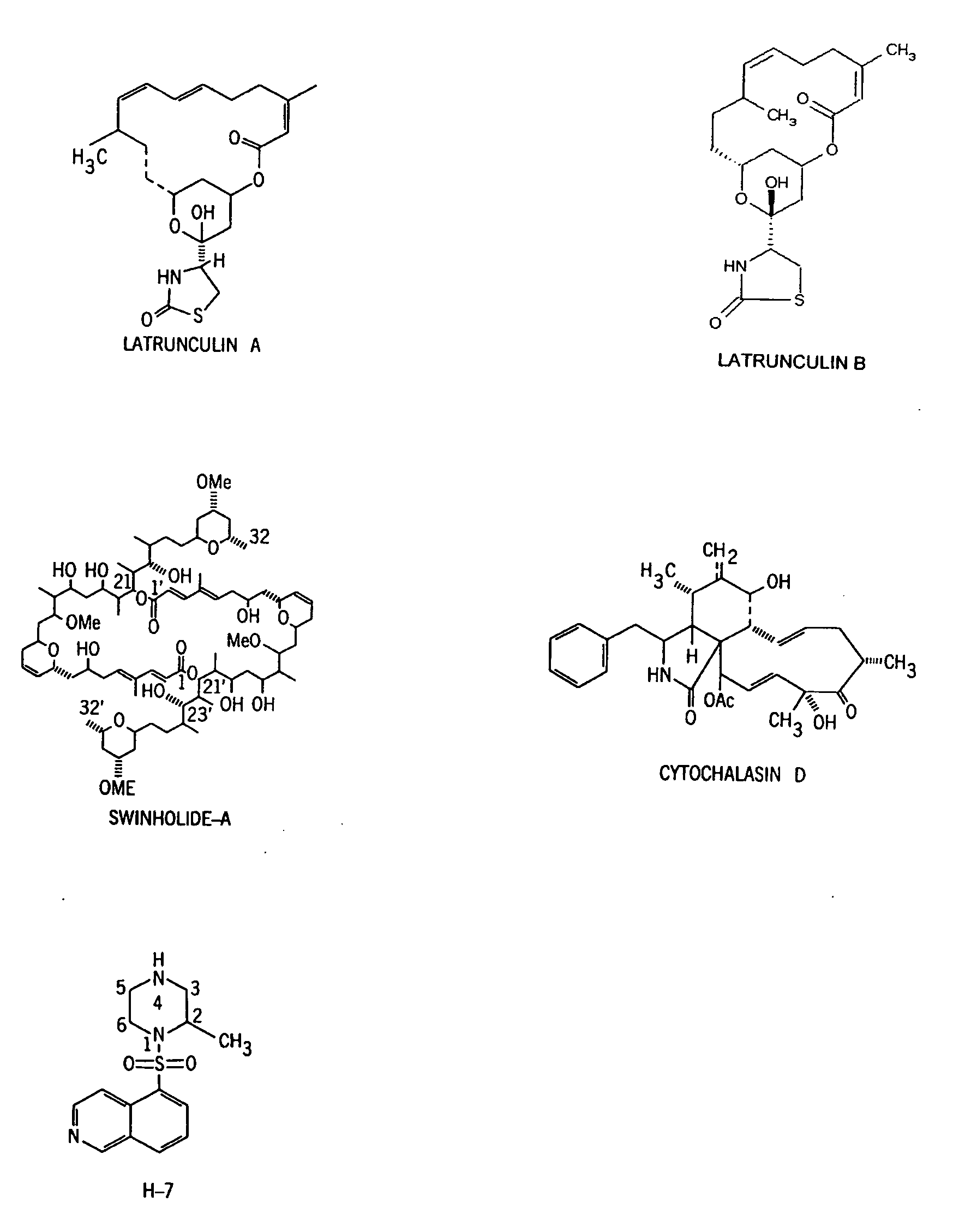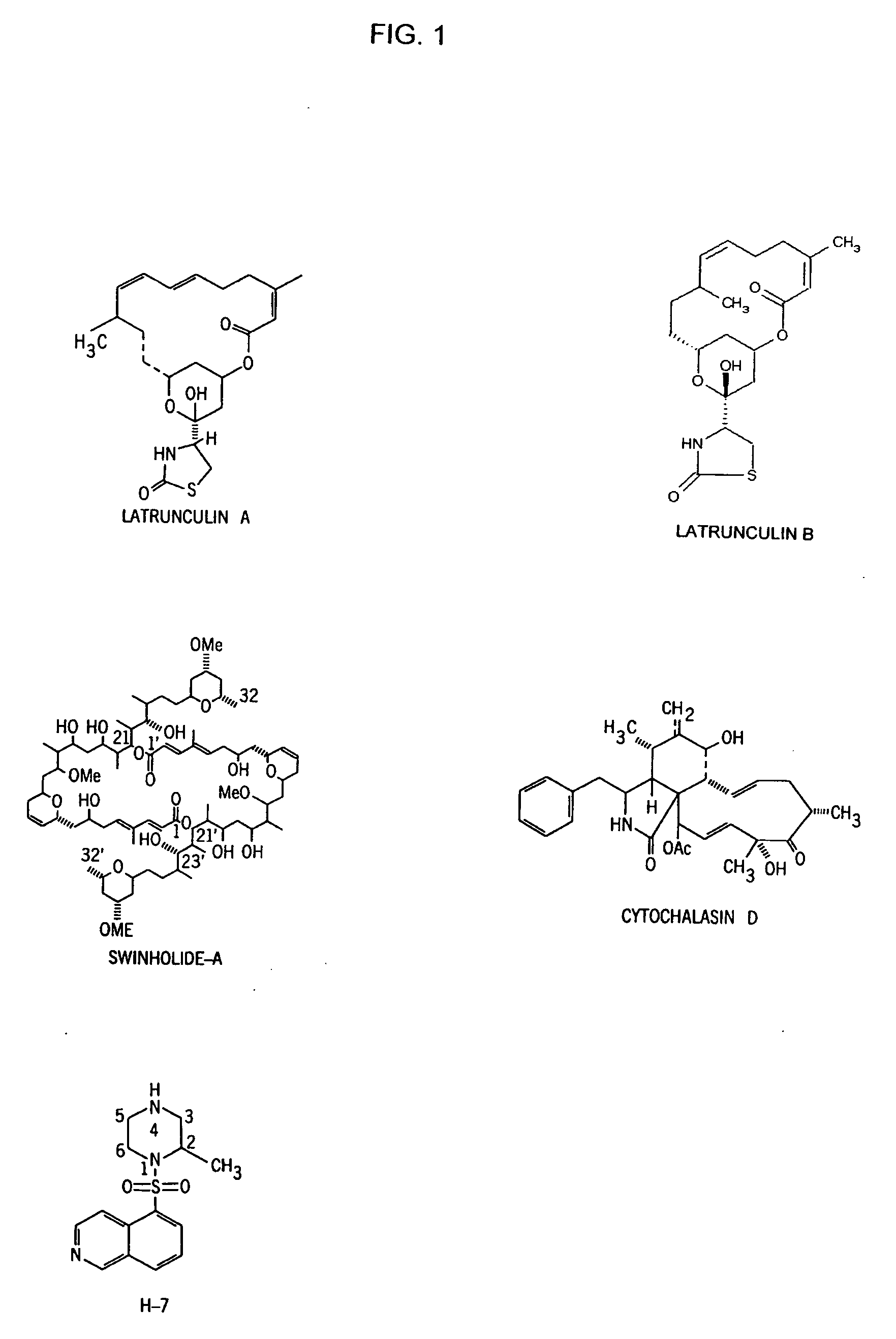Method for reducing the risk of posterior capsular opacification
a technology risk reduction, which is applied in the field of reducing the risk of posterior capsular opacification, can solve the problems of obstructing the visual axis, visual disturbance, and the need for laser/surgical capsulotomy, so as to facilitate the removal reduce the risk or severity of pco, and inhibit the proliferation of lens epithelial cells
- Summary
- Abstract
- Description
- Claims
- Application Information
AI Technical Summary
Benefits of technology
Problems solved by technology
Method used
Image
Examples
example 1
Effect of Latrunculin-B on Residue Lens Epithelial Cells During Cataract Surgery
[0036] This example demonstrates that intracapsularly administering latrunculin-B during extracapsular lens extraction facilitates the clearance of residual lens epithelial cells and in turn prevents PCO.
Materials and Methods
[0037] Two rabbits were involved in this study (one for latrunculin-B experiment and one for vehicle experiment). For each rabbit, both eyes received extracapsular lens extraction and were treated with the same 2 μM latrunculin-B or vehicle (0.25% DMSO) during surgery. Following the extracapsular lens extraction, enucleation was performed. The rabbit was then sacrificed with an overdose of pentobarbital. The lens capsular bag was removed from the enucleated eye and then fixed with 4% paraformaldehyde. Micrographs were taken by a digital camera attached on a microscope from the fixed capsular bag.
[0038] The detailed procedures are as follows:
[0039] 1. Slit lamp examination (SLE)...
example 2
In Vivo Rabbit Eye Model and Human Lens Capsular Bag Culture Model
[0052] Section one below describes methods that can be used to test the effects of single treatments of an actin-disrupting compound (e.g., latrunculin-A or latrunculin-B) or H-7 before and during lens capsule polishing on clearance of residual lens epithelial cells. Section two below describes methods that can be used to test the effects of chronic topical treatments with an actin-disrupting compound (e.g., latrunculin-A or latrunculin-B) or H-7 on PCO formation or lens epithelial cells' division and migration.
[0053] For example, the effects of latrunculin-B and H-7, either used separately or concurrently, can be tested. In section-one protocols, 2 μM latrunculin-B and / or 300 μM H-7 can be used initially as single intra-capsular treatments during surgery in both the live rabbit eye and the donated human eye. The concentration of latrunculin-B or H-7 may be reduced to 0.5 μM or 100 μM, respectively, in the second st...
PUM
 Login to View More
Login to View More Abstract
Description
Claims
Application Information
 Login to View More
Login to View More - R&D
- Intellectual Property
- Life Sciences
- Materials
- Tech Scout
- Unparalleled Data Quality
- Higher Quality Content
- 60% Fewer Hallucinations
Browse by: Latest US Patents, China's latest patents, Technical Efficacy Thesaurus, Application Domain, Technology Topic, Popular Technical Reports.
© 2025 PatSnap. All rights reserved.Legal|Privacy policy|Modern Slavery Act Transparency Statement|Sitemap|About US| Contact US: help@patsnap.com



